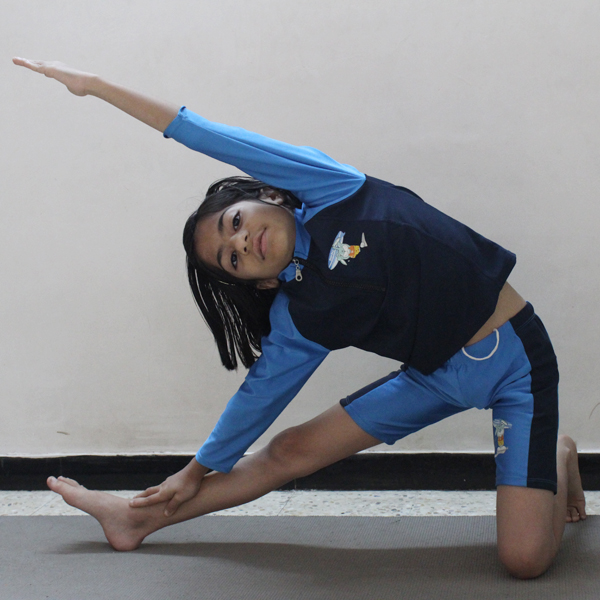Parighasana
Yoga is for Posers.

Parighasana (Gate Pose) -Steps And Benefits Here is an another awesome yoga pose called Parighasana (Gate Pose), in this Parigha means an iron rod or beam which is use to lock the gate and the meaning of Asana is seat, Pose or Posture. While doing this yoga pose your body looks like an iron beam which is used to lock the Iron Gate. Parighasana provides an entrance way for the oxygen to enter our body and reach those parts that are typically overlooked. Basically, this yoga posture contains a mickle of advantages for the digestive System, spinal and respiratory system. In simple words Parigha means an iron bar that close the gate. Preparatory Poses Adho Mukha Svanasana, Baddha Konasana, Prasarita Padottanasana, Supta Padangusthasana, Upavistha Konasana, Utthita Parsvakonasana, Utthita Trikonasana, Virasana Follow-Up Poses Trikonasana, Utthita Parsvakonasana, Parivrtta Janu Sirshasana Steps of Parighasana (Gate Pose) Kneel down on the mat and your toes are curled under. By Gate Pose you will get stability and this will opens up your soles of the feet. Or you can keep tops of your feet flat on the ground or mat. Benefits of Parighasana (Gate Pose) Scientific Aspect of Parighasana (Gate Pose) Parighasana energizes and lightens the side of the body. This pose permits the breath to become three-dimensional. “Parigha” means that the bar that close the gate, and after you assume this stance, your body really resembles that bar. After you have a cough or a foul posture, the intercostal muscles become tight. This condition constricts respiration and therefore the movement of the skeletal structure. This attitude not solely helps to stretch these muscles however additionally helps relieve metabolism issues like asthma attack, cold, flu, and allergies. When you coordinate your respiratory with the attitude, it calms the nerves and additionally cleans the vascular system. It additionally provides nourishment to the abdominal organs, thereby up digestion. This coordinated respiratory additionally roots your body and relaxed your mind. To realize these advantages, you would like to breathe and build a wave from your pelvis to your higher chest. You would like to inhale through your belly and expand the skeletal structure and replenish your chest. This attitude helps you win that wave-like motion in your respiratory. NOTE Don’t perform this pose in case of Knee injury. For this, use chair to sit and practice this instead of kneeling down. If you are suffering from neck pain or feeling dizzy then keep your gaze forward instead of looking up.